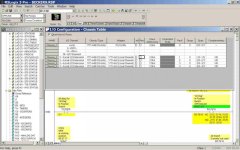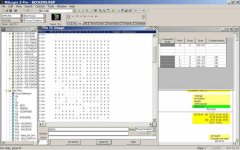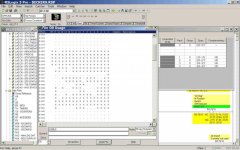rlmts
Member
Hi,
I need to add two I/O cards to a PLC5 installation.
(one 16 bit input and one 16 bit output card)
The processor is a 5/40L
In RSLogix 'Processor Status' it shows bits 11 and 12 in word S:2 set for '2 Slot addressing'
Does this setting fix the method for all Racks? Hence no need for me to remove racks to check the dip switches?
Current set up (Also see attached pics)
There are 4 racks...
Rack 0 (4 Slot?) with...
PLC5 Processor and Analogue input card + 2 spare slots
Rack 1 (12 Slot) with...
Servo Controller and Servo Expander modules, plus RS232 I/F + 7 spare slots
Rack 2 (16 Slot) with...
Various 16 bit Digital I/O but O:027 not used
(if I remember rightly 027 address used internally? PLC2 hangover?)
Rack 3 (16 Slot) with...
Various 16 bit Digital I/O
Rack 4 (16 Slot) with...
Various 16 bit Digital I/O with some spare slots for output cards ONLY (2 Slot Addressing)
I was hoping to add one 16 bit input and one 16 bit output card to rack 1 but not sure about mixing the 16 bit cards with the Servo cards which are block transferred (8 bit?) I read something about this 'mixing' problem somewhere. (Suspicious about the remainder of this rack not being used by manufacturer!)
Although, installation was originally PLC2 (see old processor still in panel) not sure if this is relevant?
To summarise, my questions are...
Based on processor status file word S:2 will all racks dip switches be set for 2 slot addressing?
Can I install one 16 bit input and one 16 bit output card into rack 1?
Thanks in advance
See attachments of the installation
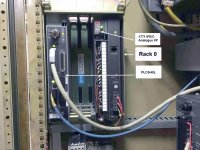
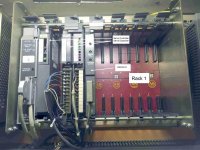
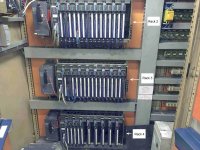
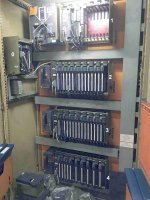
I need to add two I/O cards to a PLC5 installation.
(one 16 bit input and one 16 bit output card)
The processor is a 5/40L
In RSLogix 'Processor Status' it shows bits 11 and 12 in word S:2 set for '2 Slot addressing'
Does this setting fix the method for all Racks? Hence no need for me to remove racks to check the dip switches?
Current set up (Also see attached pics)
There are 4 racks...
Rack 0 (4 Slot?) with...
PLC5 Processor and Analogue input card + 2 spare slots
Rack 1 (12 Slot) with...
Servo Controller and Servo Expander modules, plus RS232 I/F + 7 spare slots
Rack 2 (16 Slot) with...
Various 16 bit Digital I/O but O:027 not used
(if I remember rightly 027 address used internally? PLC2 hangover?)
Rack 3 (16 Slot) with...
Various 16 bit Digital I/O
Rack 4 (16 Slot) with...
Various 16 bit Digital I/O with some spare slots for output cards ONLY (2 Slot Addressing)
I was hoping to add one 16 bit input and one 16 bit output card to rack 1 but not sure about mixing the 16 bit cards with the Servo cards which are block transferred (8 bit?) I read something about this 'mixing' problem somewhere. (Suspicious about the remainder of this rack not being used by manufacturer!)
Although, installation was originally PLC2 (see old processor still in panel) not sure if this is relevant?
To summarise, my questions are...
Based on processor status file word S:2 will all racks dip switches be set for 2 slot addressing?
Can I install one 16 bit input and one 16 bit output card into rack 1?
Thanks in advance
See attachments of the installation




Last edited:





